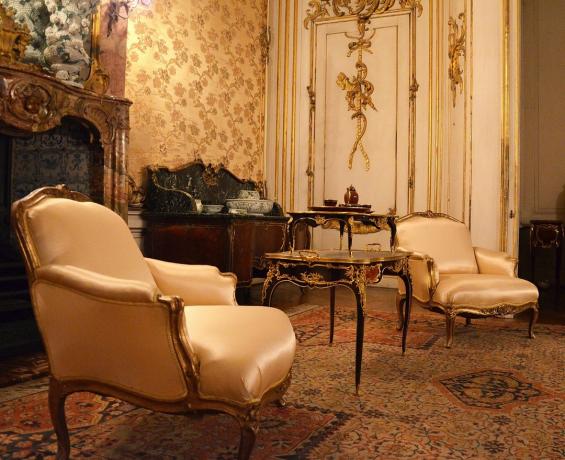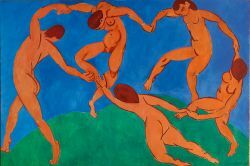It was an artistic style that predominated during the 18th century. Its emergence is explained as a derivation of Baroque, and also as an oppositional reaction to this style.
Rococo was adopted especially in decoration, painting, sculpture and architecture and was characterized by portraying the way of life of the European aristocracy of the time.
In addition to recording the extravagances of the aristocracy and their portraits, historical themes, mythological themes and human pleasures (hedonism) were also common in the Rococo.
Emergence of Rococo
The style first appeared in Europe around 1720, more precisely in Paris. Later, he also influenced artists of other nationalities, mainly Germans, Austrians and Italians. It arrived in Brazil when it was no longer a novelty in Europe.
The heyday of Rococo lasted until the end of the 18th century. Its weakening is linked to the period in which the first revolutionary ideals emerged, which later led to the outbreak of the French Revolution (1789-1799).
 The painting the swing (1766) by Jean-Honoré Fragonard is one of the most famous of the period.
The painting the swing (1766) by Jean-Honoré Fragonard is one of the most famous of the period.
Main features of Rococo
The most striking features of the Rococo style are:
- predominance of lighter colors and pastels;
- presence of elements inspired by shells (rocaille, the probable origin of the name, can be translated as shell),
- excessive use of gold tones in painting and ornamentation;
- influence of hedonism/representation of human pleasures;
- use of lines with accentuated curvatures;
- more luminosity, especially in paintings,
- presence of asymmetries;
- inspiration in the forms of nature;
- in furniture and decoration there was use of mirrors and wood;
- it was a predominantly decorative style.
Painting
Painting was more focused on the exercise of creativity by artists and on the representation of luxury, parties and the pleasures of human life. One of the main themes is the portraits of members of the aristocracy of the time, almost always represented in their magnificence and exuberance.
The painting produced in this period is considered less dramatic when compared to the art produced in the previous period - the Baroque.
Some of the great exponents of the Rococo style in painting are:
- Antoine Watteau (1684-1721): among his most famous works are Pilgrimage to the island of Cythera, Pierrot and the two cousins.
- Giovanni Battista Tiepolo (1696-1770): painted Cleopatra's Feast, Portrait of a Woman as Flora and the frescoes from the Palace of Wurzburg.
- Jean-Baptiste Chardin (1699-1779): among his great production, he painted works such as The laundress, The buffet, Basket of peaches and Soap bubbles.
- François Boucher (1703-1770): has important works such as Diana's Bath, The Triumph of Venus and Venus Consoling Love.
- Francesco Guardi (1712-1793): highlights the works View from Rialto Bridge, Piazza San Marco and Night procession in Piazza San Marco.
- Thomas Gainsborough (1727-1788): produced pieces such as the blue boy, the market cart and the morning walk.
- Jean-Honoré Fragonard (1732-1806): painted the balance, the source of love and The stolen kiss.
- Francisco de Goya (1746-1828): among his most important works are Saturn devouring a child, The parasol and The vintage.
 Pilgrimage to the island of Cythera (1717) by the French painter Antoine Watteau.
Pilgrimage to the island of Cythera (1717) by the French painter Antoine Watteau.
Architecture
The Rococo style dominated 18th-century European architecture. The use of more curved shapes, the presence of arches in the openings and the decoration made with iron elements are common characteristics of the style in architecture. In addition to France, the style was also widespread in countries such as Germany and Austria.
Another fundamental aspect of this type of architecture is the production of frescoes that portray elements of nature, adorned with lighter and more luminous colors, in addition to the strong presence of golden elements.
The use of many elements used at the same time, both in exterior architecture and decoration, is also a characteristic feature of Rococo architecture.
 The Wieskirche Church (Bavaria/Germany) is an example of Rococo architecture.
The Wieskirche Church (Bavaria/Germany) is an example of Rococo architecture.
Style also influenced religious architecture and decoration. The most striking features are the use of gilded and curved ornamentation, the representation of elements of nature and the frescoes rich in details.
Other examples of architecture are: Palace of Würzburg (Germany), Palace of Queluz (Portugal), Royal Palace of Madrid (Spain) and Palace of Versailles (France).
Decoration
The furniture produced at the time (or with its influence) has as main characteristics the wood carving, legs with more curvature and the use of golden ornaments. The most used woods were cedar, jacaranda, mahogany and laurel.
Characteristics of this type of decoration are the strategic use of lighting with many chandeliers, porcelain items, many paintings and mirrors.
This type of furniture, inspired by furniture from the colonial period, became known in Brazil as "Dom João V Style", in reference to furniture brought to Brazil by the Portuguese royal family.
 The decoration of the Sanssouci Palace (Postdam/Germany), built in the 18th century, is an example of the Rococo style.
The decoration of the Sanssouci Palace (Postdam/Germany), built in the 18th century, is an example of the Rococo style.
Sculpture
Sculpture was also a prominent area in Rococo, assuming an important decorative character, being widely used for religious and mythological representation.
The main materials used were plaster, wood and porcelain, the latter especially for small sculptures, mainly used as decorative objects.
The representation of luxury, with an elegance of delicacy, is a very typical feature of Rococo sculptures.
As with other forms of artistic expression, there was a search for detachment from the predominant Baroque style. The use of different materials, for example, represents this need well.
 The Cupid Threat (1757) by the French sculptor Etienne-Maurice Falconet (1716-1791).
The Cupid Threat (1757) by the French sculptor Etienne-Maurice Falconet (1716-1791).
Rococo in Brazil
In Brazil, the great expression of Rococo took place in Sacred Art. There are numerous Brazilian churches that were built in the style of the movement.
The style in Brazil is characterized by the use of gold and natural forms, easily found in the ornamentation of altars in churches built at the time. Minas Gerais, Rio de Janeiro, Pernambuco and Bahia are states that have several buildings in this style.
In addition to Sacred Art, decoration and furniture were also highly influenced by style, with Dom João V furniture being its most famous expression.
 The Church of São Francisco de Assis (São João del-Rei/Minas Gerais) has Rococo characteristics.
The Church of São Francisco de Assis (São João del-Rei/Minas Gerais) has Rococo characteristics.
Rococo in Brazil and Aleijadinho
The best known Rococo artist was Aleijadinho from Minas Gerais - Antônio Francisco Lisboa (1738-1814). He became known by this nickname because of an illness that made his hands and feet wither. However, despite the deformities, he did not stop working on his sculptures and architectural works.
Several constructions from the colonial period in Minas Gerais are attributed to him. Some examples are: Bom Jesus de Matosinhos Sanctuary (Congonhas do Campo), São Francisco de Assis Church (Ouro Preto) and the sculptures of Nossa Senhora do Carmo Church (Sabará).
Also read the meaning of Baroque and learn more about the art history.


